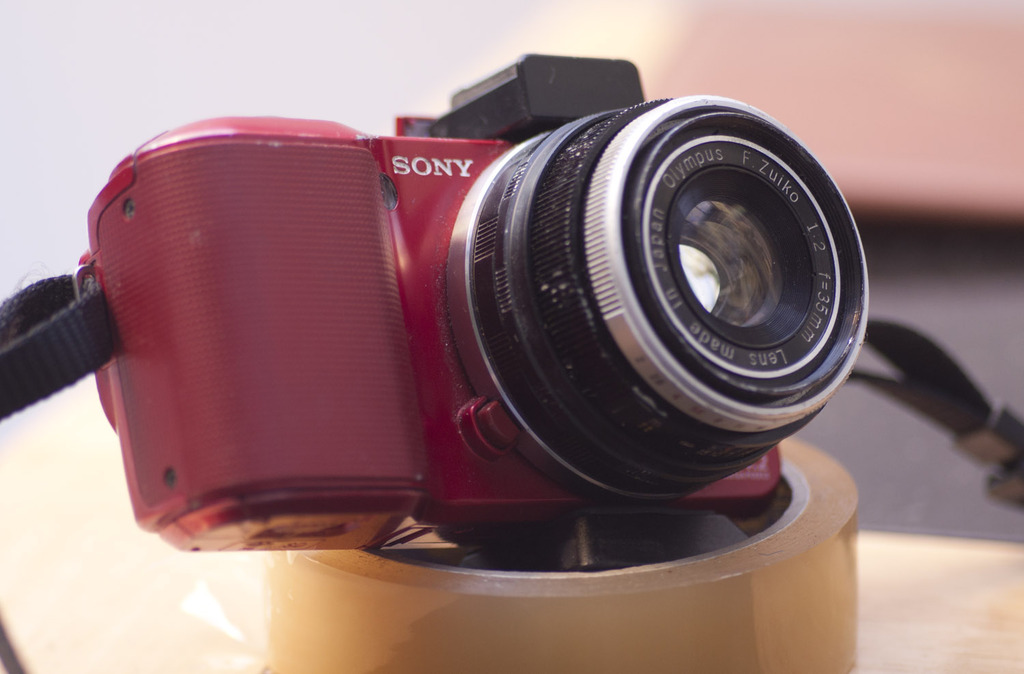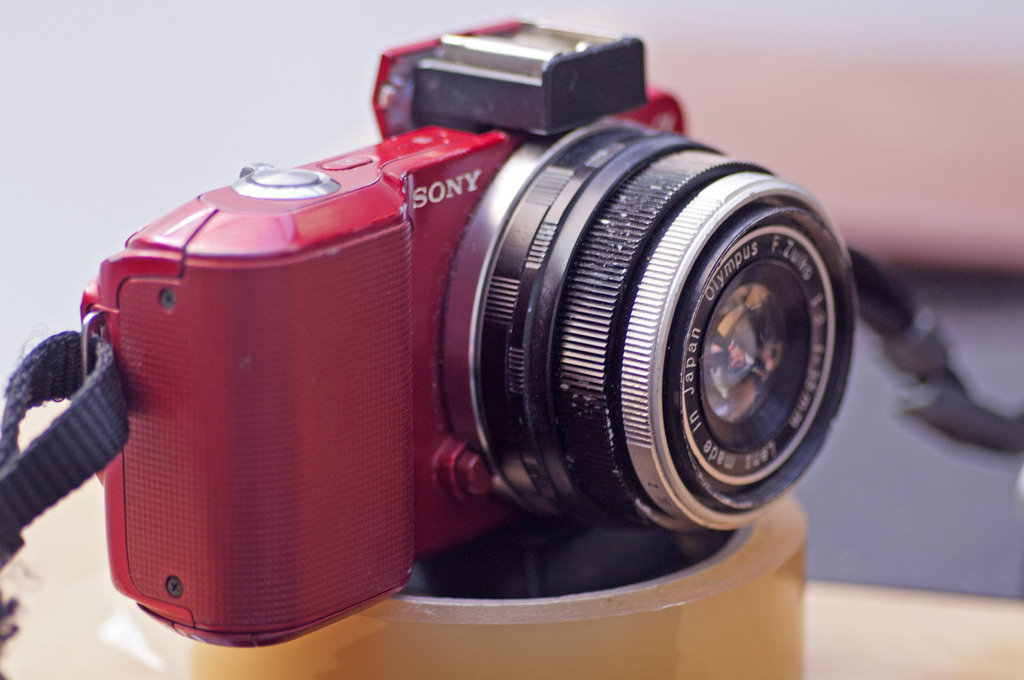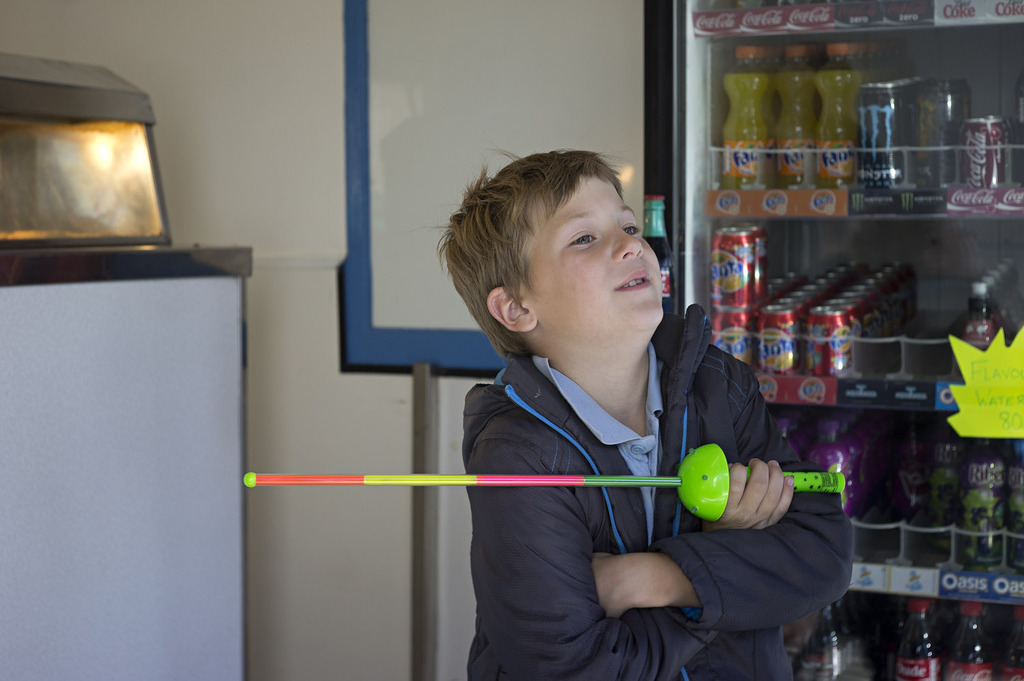| View previous topic :: View next topic |
| Author |
Message |
CuriousOne

Joined: 31 Dec 2013
Posts: 669
Location: Home
|
 Posted: Wed Jul 09, 2014 7:38 am Post subject: Which rangefinder cameras have separatable lens assembly? Posted: Wed Jul 09, 2014 7:38 am Post subject: Which rangefinder cameras have separatable lens assembly? |
 |
|
CuriousOne wrote:
Hello.
I'm looking for old rangefinder cameras, where lens assembly is separate and affixed to main body via screws or whatsoever. I'm not looking for rangefinders with interchangeable lens.
As far as I know, some Yashica models have separatable lens. What about others?
_________________
I have nothing to compensate with lens |
|
| Back to top |
|
 |
luisalegria


Joined: 07 Mar 2008
Posts: 6602
Location: San Francisco, USA
Expire: 2018-01-18
|
 Posted: Wed Jul 09, 2014 2:03 pm Post subject: Posted: Wed Jul 09, 2014 2:03 pm Post subject: |
 |
|
luisalegria wrote:
Most old Japanese rangefinders with leaf shutters of the 50s-60s have a front plate holding the focus mechanism. The lens and shutter is secured in the focus mechanism by a retaining ring around the rear lens cell. I have seen this in numerous brands.
The focus mechanism can generally be separated from the front plate, but you have to remove the plate first.
_________________
I like Pentax DSLR's, Exaktas, M42 bodies of all kinds, strange and cheap Japanese lenses, and am dabbling in medium format/Speed Graphic work. |
|
| Back to top |
|
 |
visualopsins


Joined: 05 Mar 2009
Posts: 11026
Location: California
Expire: 2025-04-11
|
 Posted: Wed Jul 09, 2014 3:14 pm Post subject: Posted: Wed Jul 09, 2014 3:14 pm Post subject: |
 |
|
visualopsins wrote:
The rangefinder cameras with broken or otherwise unrepairable mechanics...
_________________
☮☮☮☮☮☮☮☮☮☮☮☮☮☮☮☮☮☮☮☮☮☮☮☮☮☮☮☮☮☮☮☮ like attracts like! ☮☮☮☮☮☮☮☮☮☮☮☮☮☮☮☮☮☮☮☮☮☮☮☮☮☮☮☮☮☮☮☮
Cameras: Sony ILCE-7RM2, Spotmatics II, F, and ESII, Nikon P4
Lenses:
M42 Asahi Optical Co., Takumar 1:4 f=35mm, 1:2 f=58mm (Sonnar), 1:2.4 f=58mm (Heliar), 1:2.2 f=55mm (Gaussian), 1:2.8 f=105mm (Model I), 1:2.8/105 (Model II), 1:5.6/200, Tele-Takumar 1:5.6/200, 1:6.3/300, Macro-Takumar 1:4/50, Auto-Takumar 1:2.3 f=35, 1:1.8 f=55mm, 1:2.2 f=55mm, Super-TAKUMAR 1:3.5/28 (fat), 1:2/35 (Fat), 1:1.4/50 (8-element), Super-Multi-Coated Fisheye-TAKUMAR 1:4/17, Super-Multi-Coated TAKUMAR 1:4.5/20, 1:3.5/24, 1:3.5/28, 1:2/35, 1:3.5/35, 1:1.8/85, 1:1.9/85 1:2.8/105, 1:3.5/135, 1:2.5/135 (II), 1:4/150, 1:4/200, 1:4/300, 1:4.5/500, Super-Multi-Coated Macro-TAKUMAR 1:4/50, 1:4/100, Super-Multi-Coated Bellows-TAKUMAR 1:4/100, SMC TAKUMAR 1:1.4/50, 1:1.8/55
M42 Carl Zeiss Jena Flektogon 2.4/35
Contax Carl Zeiss Vario-Sonnar T* 28-70mm F3.5-4.5
Pentax K-mount SMC PENTAX-A ZOOM 1:3.5 35~105mm, SMC PENTAX ZOOM 1:4 45~125mm
Nikon Micro-NIKKOR-P-C Auto 1:3.5 f=55mm, NIKKOR-P Auto 105mm f/2.5 Pre-AI (Sonnar), Micro-NIKKOR 105mm 1:4 AI, NIKKOR AI-S 35-135mm f/3,5-4,5
Tamron SP 17mm f/3.5 (51B), Tamron SP 17mm f/3.5 (151B), SP 500mm f/8 (55BB), SP 70-210mm f/3.5 (19AH)
Vivitar 100mm 1:2.8 MC 1:1 Macro Telephoto (Kiron)
|
|
| Back to top |
|
 |
luisalegria


Joined: 07 Mar 2008
Posts: 6602
Location: San Francisco, USA
Expire: 2018-01-18
|
 Posted: Wed Jul 09, 2014 4:56 pm Post subject: Posted: Wed Jul 09, 2014 4:56 pm Post subject: |
 |
|
luisalegria wrote:
Best ones to cannibalize are those with broken shutter or aperture blades. A fairly common problem.
These can be repaired, but only by taking these blades from another identical unit - which will be left without blades.
_________________
I like Pentax DSLR's, Exaktas, M42 bodies of all kinds, strange and cheap Japanese lenses, and am dabbling in medium format/Speed Graphic work. |
|
| Back to top |
|
 |
iangreenhalgh1


Joined: 18 Mar 2011
Posts: 15679
Expire: 2014-01-07
|
 Posted: Wed Jul 09, 2014 6:16 pm Post subject: Posted: Wed Jul 09, 2014 6:16 pm Post subject: |
 |
|
iangreenhalgh1 wrote:
This is the Pen EM lens, it's 6 elements in 4 groups, this design is not found in Pen F mount, the well known Pen F 1.8/38 is 6e/5g and physically larger.

Remounted for use on NEX:


Lens test and sample images here:
http://forum.mflenses.com/olympus-f-zuiko-f2-35mm-on-nex-3-t67054.html
f4, guess focus inside a dark shop:

100% crop:

_________________
I don't care who designed it, who made it or what country it comes from - I just enjoy using it! |
|
| Back to top |
|
 |
JohnBar

Joined: 21 Jun 2012
Posts: 581
Location: Liverpool
|
 Posted: Wed Jul 09, 2014 7:53 pm Post subject: Posted: Wed Jul 09, 2014 7:53 pm Post subject: |
 |
|
JohnBar wrote:
The Braun Paxette has versions with some interesting fixed lenses
_________________
Rectilux 3FF Series single focus anamorphic attachments
http://www.transferconvert.co.uk/cinemania/rectilux-3ff.html
Regular News on https://www.facebook.com/pages/Rectilux/704770636267200 |
|
| Back to top |
|
 |
iangreenhalgh1


Joined: 18 Mar 2011
Posts: 15679
Expire: 2014-01-07
|
 Posted: Wed Jul 09, 2014 8:38 pm Post subject: Posted: Wed Jul 09, 2014 8:38 pm Post subject: |
 |
|
iangreenhalgh1 wrote:
Paxette fixed lenses are just triplets and tessars of varying price/quality levels, might as well just use an interchangeable triplet (Domiplan, Trioplan etc) or tessar (Tessar, Primotar, Xenar, Color-Skopar etc).
The really interesting stuff is to be found on high end Japanese models - ones with f2, f1.9, f1.8 and f1.7 lenses, those are 6 elements in 4 or 5 group types. Slower 2.8 models are usually 4e/3g tessars.
Olympus had some models with superb lenses - the 35SP had a 7 element 1.7/42, the 35RD had a 6 element 1.7/40 and the 35RC had a 5 element 2.8/42.
There were too many other makers of similar cameras to list, just look for broken ones rather than destroying a working camera.
_________________
I don't care who designed it, who made it or what country it comes from - I just enjoy using it! |
|
| Back to top |
|
 |
CuriousOne

Joined: 31 Dec 2013
Posts: 669
Location: Home
|
 Posted: Thu Jul 10, 2014 2:41 pm Post subject: Posted: Thu Jul 10, 2014 2:41 pm Post subject: |
 |
|
CuriousOne wrote:
I'm looking for CHEAP ones 
What about Petri rangefinders?
_________________
I have nothing to compensate with lens |
|
| Back to top |
|
 |
kansalliskala


Joined: 19 Jul 2007
Posts: 5043
Location: Southern Finland countryside
Expire: 2016-12-30
|
 Posted: Thu Jul 10, 2014 8:01 pm Post subject: Posted: Thu Jul 10, 2014 8:01 pm Post subject: |
 |
|
kansalliskala wrote:
| iangreenhalgh1 wrote: |
Olympus had some models with superb lenses - the 35SP had a 7 element 1.7/42, the 35RD had a 6 element 1.7/40 and the 35RC had a 5 element 2.8/42.
There were too many other makers of similar cameras to list, just look for broken ones rather than destroying a working camera. |
DC is cheaper for cannibalism
Click here to see on Ebay
_________________
MF: Kodak DCS SLR/c; Samsung NX10; OM-10; Canon T50
Zuiko 28/3.5, Distagon 35/2.8; Yashica ML 50/2;
Zuiko 50/1.4; S-M-C 120/2.8; Zuiko 135/3.5; 200/5;
Tamron AD1 135/2.8, Soligor 180/3.5; Tamron AD1 300/5.6
Tamron zooms: 01A, Z-210
Yashicaflex C; Київ 4 + Юпитер 8, 11; Polaroid 100; Olympus XA; Yashica T3
Museum stuff: Certo-Phot; Tele-Edixon 135; Polaris 90-190; Asahi Bellows; Ixus IIs
Projects: Agfa Isolette III (no shutter), Canon AE-1D (no sensor),
Nikon D80 (dead), The "Peace Camera"
AF: Canon, Tokina, Sigma Video: JVC GZ-MG275E |
|
| Back to top |
|
 |
kansalliskala


Joined: 19 Jul 2007
Posts: 5043
Location: Southern Finland countryside
Expire: 2016-12-30
|
 Posted: Thu Jul 10, 2014 8:14 pm Post subject: Posted: Thu Jul 10, 2014 8:14 pm Post subject: |
 |
|
kansalliskala wrote:
| CuriousOne wrote: |
I'm looking for CHEAP ones 
What about Petri rangefinders? |
https://www.flickr.com/photos/dbroglin/3936891010/
that's like taking a motor from a 1960's porsche 911 to your VW golf
_________________
MF: Kodak DCS SLR/c; Samsung NX10; OM-10; Canon T50
Zuiko 28/3.5, Distagon 35/2.8; Yashica ML 50/2;
Zuiko 50/1.4; S-M-C 120/2.8; Zuiko 135/3.5; 200/5;
Tamron AD1 135/2.8, Soligor 180/3.5; Tamron AD1 300/5.6
Tamron zooms: 01A, Z-210
Yashicaflex C; Київ 4 + Юпитер 8, 11; Polaroid 100; Olympus XA; Yashica T3
Museum stuff: Certo-Phot; Tele-Edixon 135; Polaris 90-190; Asahi Bellows; Ixus IIs
Projects: Agfa Isolette III (no shutter), Canon AE-1D (no sensor),
Nikon D80 (dead), The "Peace Camera"
AF: Canon, Tokina, Sigma Video: JVC GZ-MG275E |
|
| Back to top |
|
 |
luisalegria


Joined: 07 Mar 2008
Posts: 6602
Location: San Francisco, USA
Expire: 2018-01-18
|
 Posted: Thu Jul 10, 2014 8:32 pm Post subject: Posted: Thu Jul 10, 2014 8:32 pm Post subject: |
 |
|
luisalegria wrote:
Petris are a good target.
The cameras look nice, the earlier ones anyway, but the bodies are rather troublesome.
The lenses are standard 6 element double gauss types. They shouldn't be bad. Petri bought them from someplace, probably the same places the others were getting them.
The shutters are fine, Copals on the ones I have and the same as used by several other Japanese makers.
I have worked on three so far, of different versions, all have the same f/1.9 lens and the same fault, in that the cocking linkage (that transfers the cocking lever motion to the shutter) wears out easily, and is not easy to fix.
_________________
I like Pentax DSLR's, Exaktas, M42 bodies of all kinds, strange and cheap Japanese lenses, and am dabbling in medium format/Speed Graphic work. |
|
| Back to top |
|
 |
SXR_Mark


Joined: 12 Jun 2010
Posts: 506
Location: England
|
 Posted: Thu Jul 10, 2014 9:24 pm Post subject: Posted: Thu Jul 10, 2014 9:24 pm Post subject: |
 |
|
SXR_Mark wrote:
If you want cheap, then look for viewfinder rather than rangefinder cameras.
The cameras with easy to remove lenses are those that take a standard shuttered lens of the type that would be used on a folding camera and simply mount them rigidly. These lenses are just held on with a simple retaining ring at the back, as they would have been mounted on the bellows . Examples that I have taken lenses from include Kodak Retinette, Agfa Silette, King Regulette, Illford Sportsman, Balda Baldina.
However, as Ian has pointed out, these lenses will be triplet or Tessar types. But I don’t think this is necessarily bad. A good triplet or Tessar can be very good (and a bad one can be very bad). The Voigtlander Skopar that I converted to m4/3 is really nice. Note this particular lens was not as simple to remount as the shuttered types mentioned above.
With triplets and Tessars, some will focus by moving the front element and others by moving the whole lens (unit focusing). In my experience, front element focusing often compromises the lens performance a lot and the resolution falls dramatically at close focus distances. Thus, I prefer to mount all such lens on a helicoid or bellows to allow unit focusing, leaving the front element in a position which gives the best performance (usually at or near the nominal infinity position).
Later Japanese fixed lens cameras with more complicated optical designs are (in my experience) much harder to remove and adapt. Some will not retain the aperture either. I have converted a lens from a Minolta Hi-Matic and Konica C35. Both were a lot of work and I would rather use the Skopar. The thread below for the Minolta shows you the work involved.
Minolta
Konica
One thing to point out is that if you retain the focusing of the original camera you will not have a very short minimum focus distance because such cameras don’t focus close due to the inevitable parallax error between lens and viewfinder.
_________________
Olympus OM-D E-M1 for everything |
|
| Back to top |
|
 |
philslizzy


Joined: 07 Aug 2012
Posts: 4745
Location: Cheshire, England
|
 Posted: Thu Jul 10, 2014 9:36 pm Post subject: Posted: Thu Jul 10, 2014 9:36 pm Post subject: |
 |
|
philslizzy wrote:
I agree with the above post. Non rangefinders are the better ones if you want to remove the lens easily. I have converted a Konica C35 lens, an Olympus trip, a Minox 35CL, a Color Skopar from a Voigtlander Vito B, and an Agilux from an Agimatic. I say the best is the Konica C35, next is the Minox CL and then the Color Skopar.
_________________
Hero in the 'messin-with-cameras-for-the-hell-of-it department'. Official. |
|
| Back to top |
|
 |
|
|
|
You cannot post new topics in this forum
You cannot reply to topics in this forum
You cannot edit your posts in this forum
You cannot delete your posts in this forum
You cannot vote in polls in this forum
|
